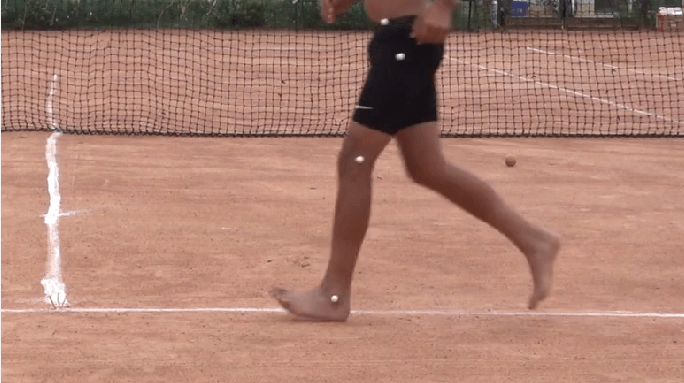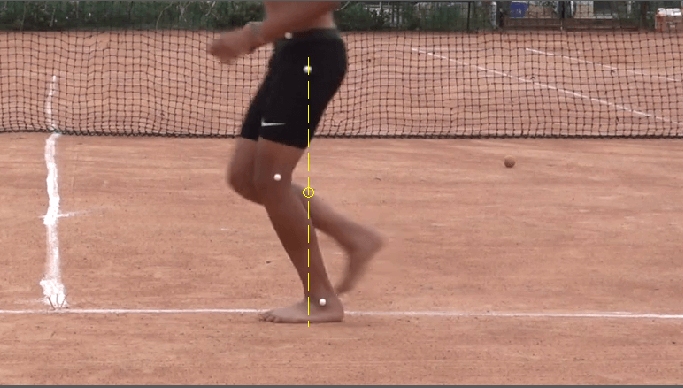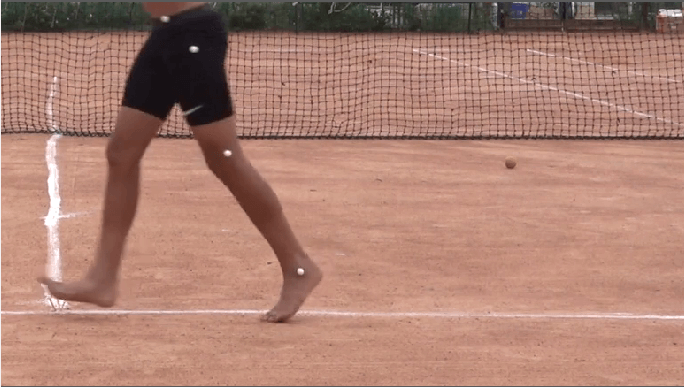RUNNING GAIT CYCLE
Understanding the running gait cycle is imperative for proper clinical gait analysis and communication with runners.
Just like walking, it is a standard to begin the running gait cycle from the initial contact of a leg till the next initial contact of this same leg. Unlike walking, there is no double support phase during the running gait cycle.
Important Phases of Running Cycle
Initial contact

Instant at which the foot first makes contact with the ground and is best identified in the sagittal plane.
This is the moment when the foot just hits the ground. At this moment, forces approaching 2.5 times the body weight are suddenly exerted on the body. Hence, efficient shock absorption is important to minimize excessive joint loading at initial contact.
KNEE ANGLE: Knee angle is the measure of knee flexion/extension present in the stance phase leg during initial contact. Knee flexion angles near 20° are generally recommended for effective shock absorption
LEG INCLINATION ANGLE (LIA): The leg inclination angle is the angle of the tibia with the true vertical. This angle plays a role in the amount of stress and loading at the tibia during running, a common problem found in runners with a history of ‘Tibial stress fracture’
REARFOOT VS FOREFOOT STRIKE
There is no universal agreement on which foot-strike pattern is the best suitable for all runners. According to recent studies (Click here to read the research), Forefoot Strike seems favourable for patients with unstable knee joints in the AP axis and Rear Foot Strike may be recommended for runners with unstable ankle joints.
A number of studies have investigated the effect of shift from a rearfoot to a forefoot strike pattern. One such study by Roper et. all monitored the transition process in a group of runners. The study reported no significant adverse events in the experimental group. The experimental group however complained of calf soreness during the retraining phase which subsided by the 6th retraining session for all subjects.
Two subjects in the experimental group (25%) reported ankle soreness associated with the new running gait at the one-month follow-up. Subjects described it as an ache that quickly subsided after they discontinued running

Mid Stance

Instant when the greater trochanter of the femur lines up directly over the mid-point of the foot. This can be easily identified in the sagittal plane.
In the posterior view/anterior view, mid stance can be identified as the moment when the pelvis is at its lowest vertical position.
At this point in the gait cycle, the entire weight of the body is on a single leg. Hence, the parameters measured at this point are useful in assessing the stability and weight bearing strength of the stance phase leg.
Push OFF

Instant at which the foot just leaves the ground and is best identified in the sagittal plane.
During the push-off phase, the major role of the stance phase leg is to propel the body into the next stride
RESOURCES FOR FURTHER READING
1. Gallow, A. & Heiderscheit, B., 2016. Clinical Aspects of Running Gait Analysis. In: T. L. Miller, ed. Endurance Sports Medicine. s.l.:s.n., p. 336.
2. Souza, R. . B., 2016 . An Evidence-Based Videotaped Running Biomechanics Analysis. Phys Med Rehabil Clin N Am, 27(1), p. 217–236.
No comments:
Post a Comment